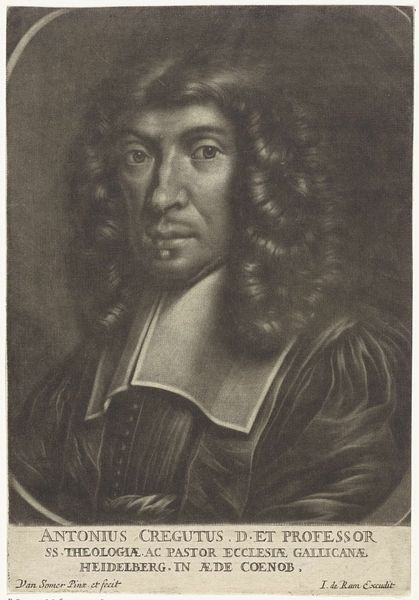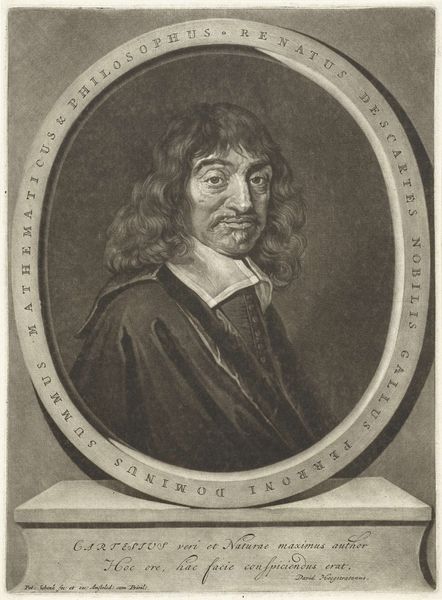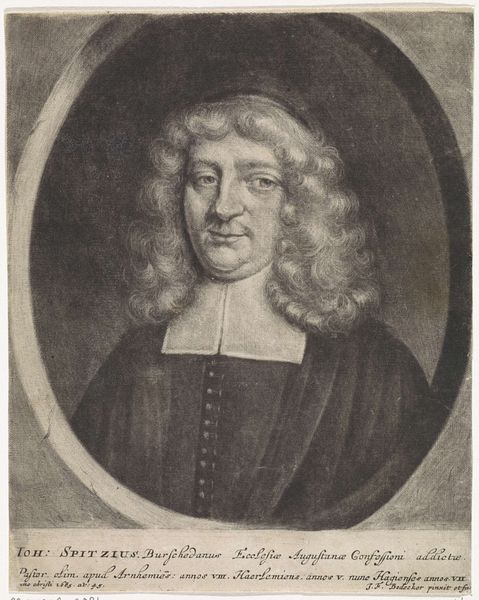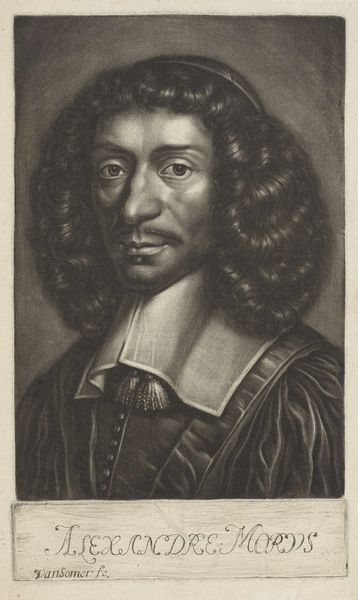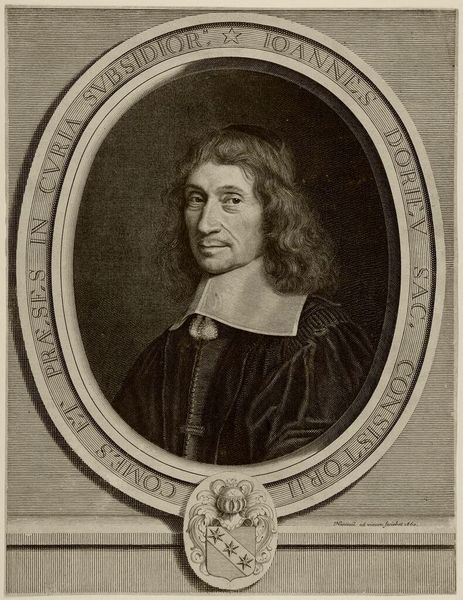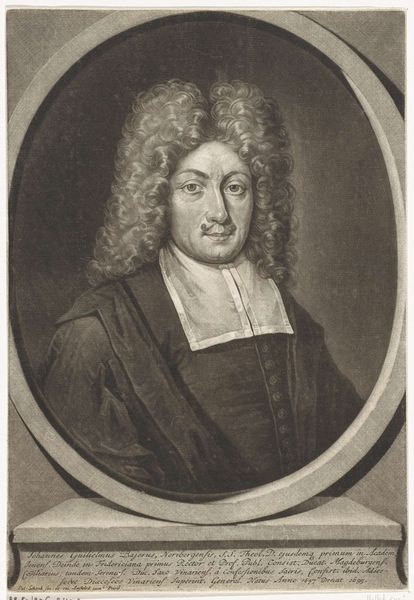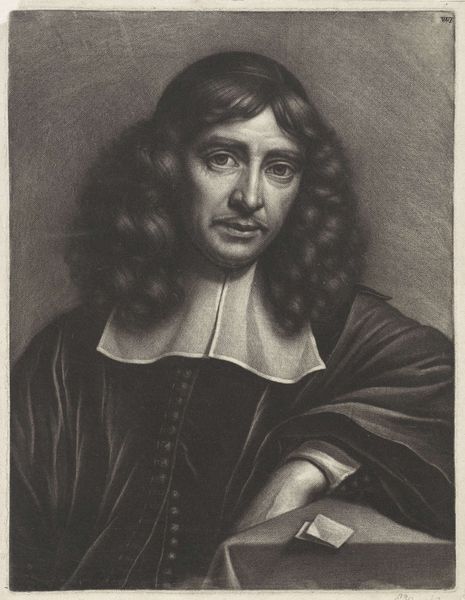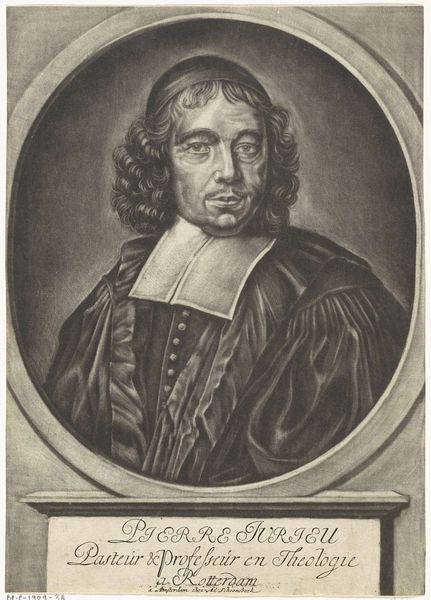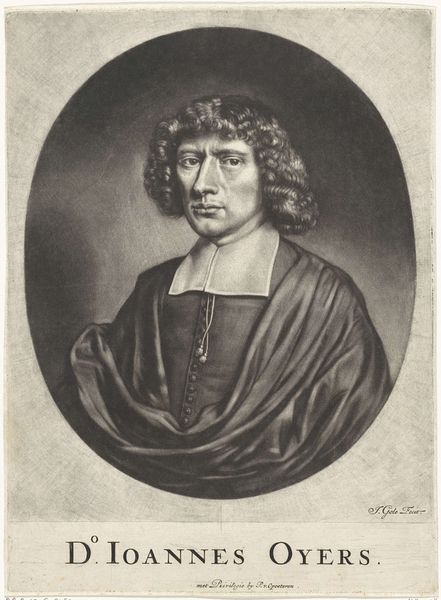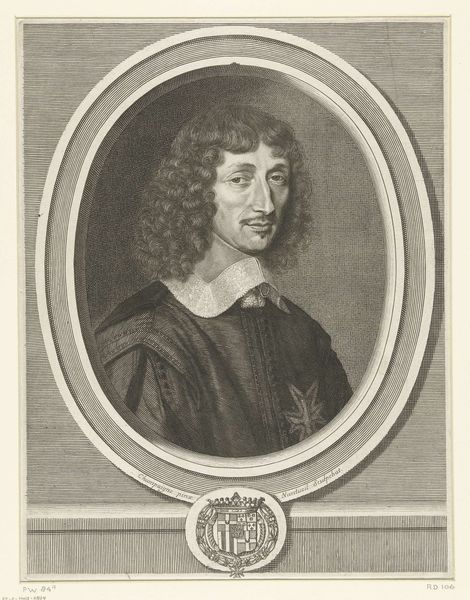
print, engraving
#
portrait
#
baroque
# print
#
history-painting
#
engraving
Dimensions: height 142 mm, width 121 mm
Copyright: Rijks Museum: Open Domain
Editor: Here we have Wallerant Vaillant's "Portret van de theoloog en dichter Alexander Morus," made sometime between 1658 and 1677. It’s an engraving, so it's quite detailed despite its age, giving the subject a strong, almost severe look. What can you tell me about it? Curator: This portrait, while seemingly a straightforward depiction of a prominent figure, exists within a complex web of power and representation. Morus, a theologian and poet, is deliberately presented in a way that reinforces his intellectual and social standing. What ideological work do you think such portraits performed in the 17th century? Editor: Well, it's definitely designed to show him as important, maybe even untouchable, right? Like he’s someone with authority, whose ideas matter. Curator: Precisely. Consider the historical context: the rise of the bourgeoisie, religious conflicts, and the consolidation of nation-states. Portraits like these served to legitimize authority and construct identities. How does the medium of engraving itself contribute to this? Editor: Because it’s a print, it can be reproduced, right? So, it's not just about honoring him in one place but spreading that image and that authority more widely. Curator: Exactly! It’s a form of visual propaganda, if you will. Furthermore, think about the visual language. The subject’s clothing, his gaze, the composition - all carefully curated to project a specific image of intellectual and moral authority. How do we interpret such carefully constructed portrayals today, especially considering issues of representation and power? Editor: It's like… understanding who benefits from these images is key. It forces me to really question the narrative and what's hidden beneath the surface. Curator: Indeed. By engaging with the historical and social forces that shaped this portrait, we gain a more nuanced understanding of its meaning and enduring relevance. Editor: I hadn't considered all the layers of intent behind such a seemingly straightforward portrait. Thanks!
Comments
No comments
Be the first to comment and join the conversation on the ultimate creative platform.
